In this issue, we will consider the values of a good public transit system, for a citizen as well as a SneakyArtist. We will look at Escher’s depiction of a fourth spatial dimension, and connect to the plot of a 19th century sci-fi novella. This connect will take us along human philosophies to culminate in a haunting scene from one of my favorite TV shows - Sacred Games (on Netflix).
The SneakyArt Post is a newsletter about art drawn secretly in public spaces. If you know someone else who might enjoy this post, please consider sharing it.
SneakyArt on the CTA
In my opinion, no city can be great without a great public-transit system. It is my favorite way to explore any city, and one of the reasons I fell in love with Chicago. Public transport is an opportunity for humanity to congregate. It unites unrelated humanity under a common goal - to get somewhere to do something.
It is a great opportunity to find SneakyArt.

Friends, on the CTA (2017)

Strangers, on the CTA Red Line (2017)
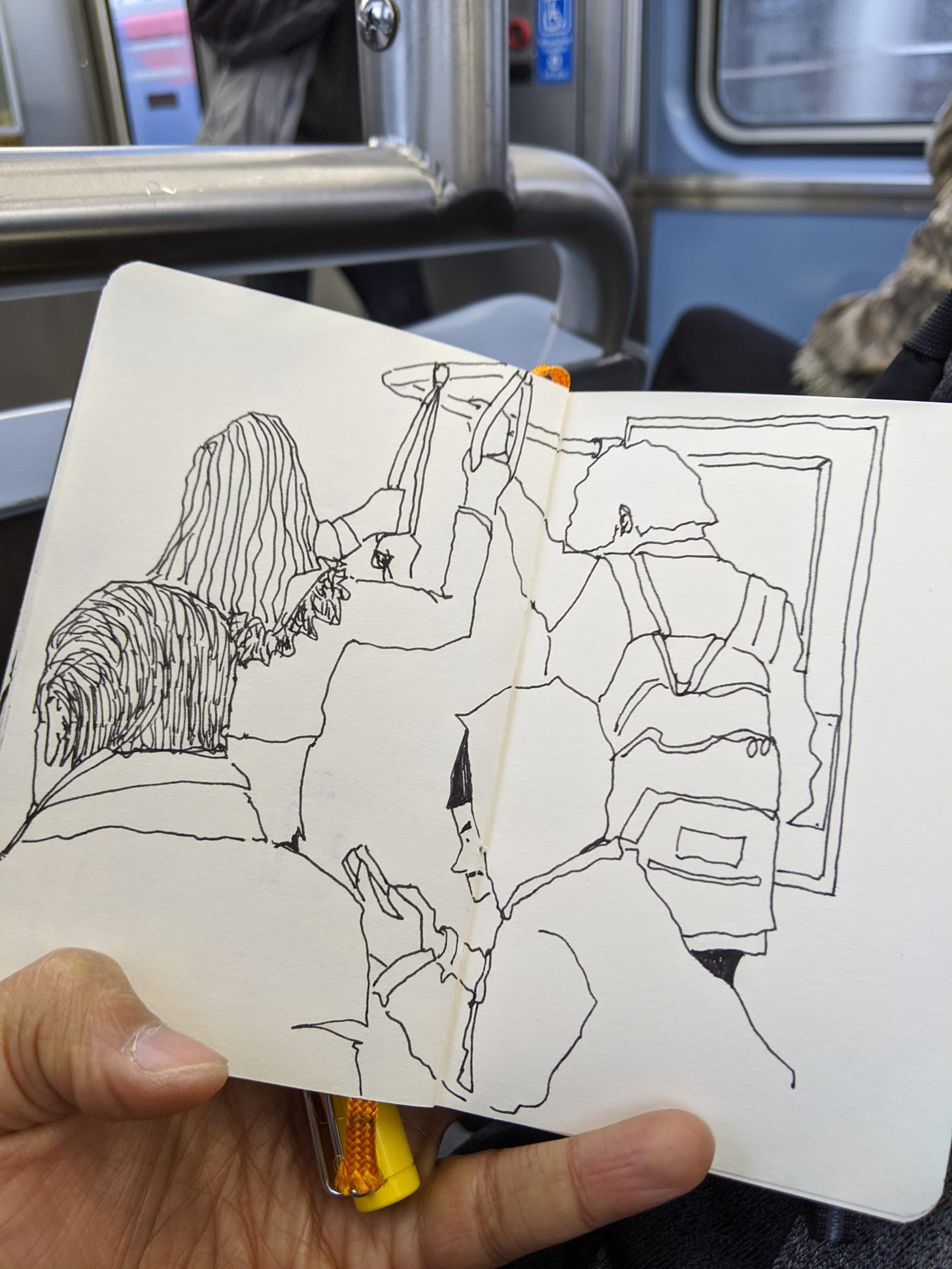
Different people, CTA (2020)
For the most part, people travel together but alone. We are co-passengers inside this tube, but we do our hardest to not acknowledge the fact. Most people are plugged into their private bubbles of information - listening to music, watching a movie, or reading a book.
We hardly seem conscious of the fact that our lives are intersecting in wonderfully random ways. I see someone standing in a shirt that catches my eye. For a few moments, they occupy a part in my life. I wonder who they are, and what their life is like. What is it like to be them - to have that face, or that height, or age? I try, but I cannot do it for long. My mind limits me to my own world and my own experience. I am the center of my own universe, and they are just passing through.
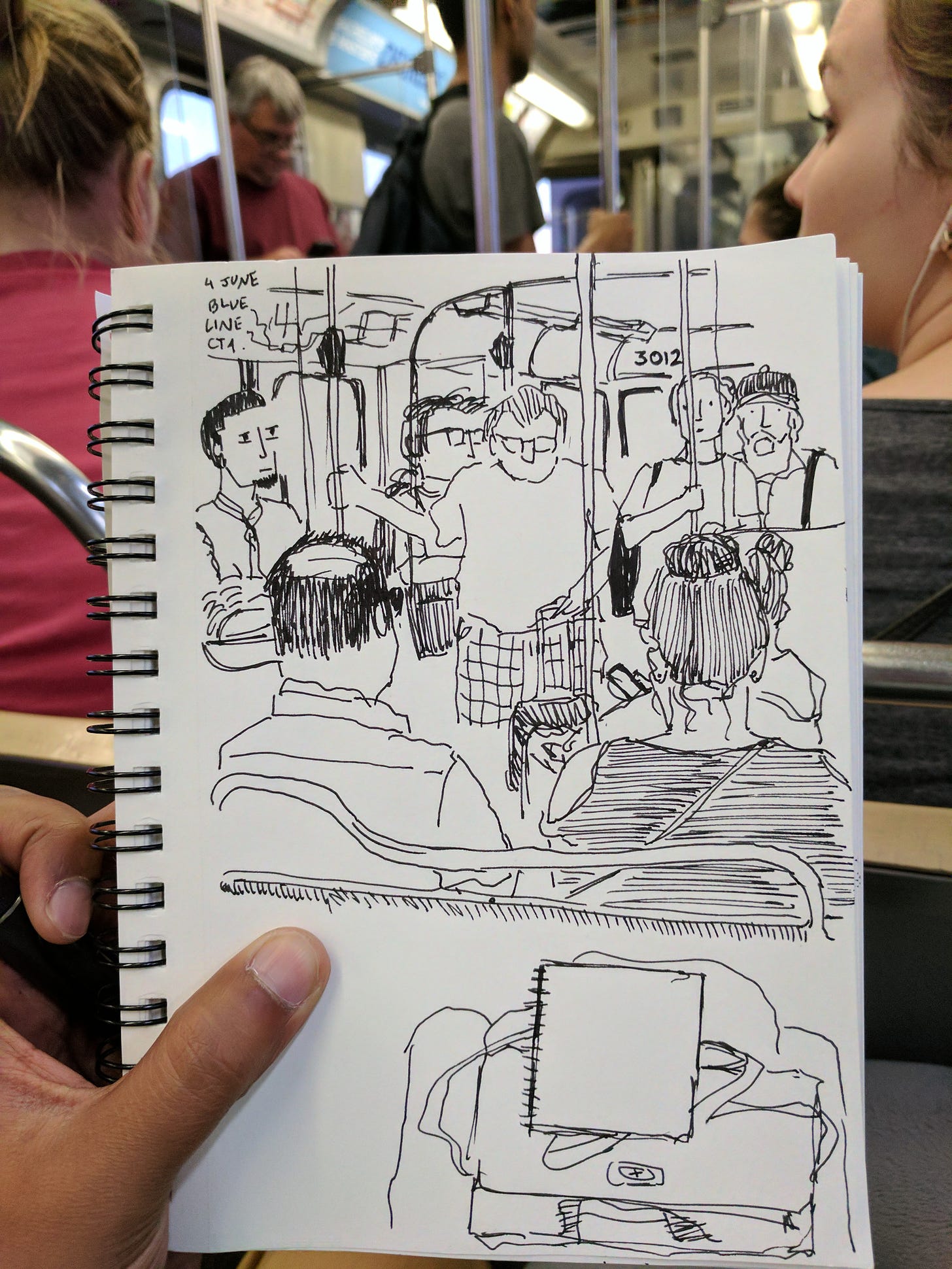
The Blue Line, connecting the airport to the city (2018)
A few years ago, I came across a wonderful word to describe this phenomenon. From the Dictionary of Obscure Sorrows, sonder is “the realization that each random passerby is living a life as vivid and complex as your own—populated with their own ambitions, friends, routines, worries and inherited craziness—an epic story … in which you might appear only once, as an extra sipping coffee in the background, as a blur of traffic passing on the highway, as a lighted window at dusk.”

Not strictly public transport, but the river cruises are an excellent way to see the city. There are water-taxis too! (2018)
Everytime I draw people, I spend a few minutes with them in this way, wondering about the epic story of their lives.
Higher dimensions with MC Escher
In past issues, we considered Escher’s representations of the three-dimensional world on flat surfaces. The artist is acutely aware that he is ‘flattening’ reality and plays often with that concept. Read it here and here.
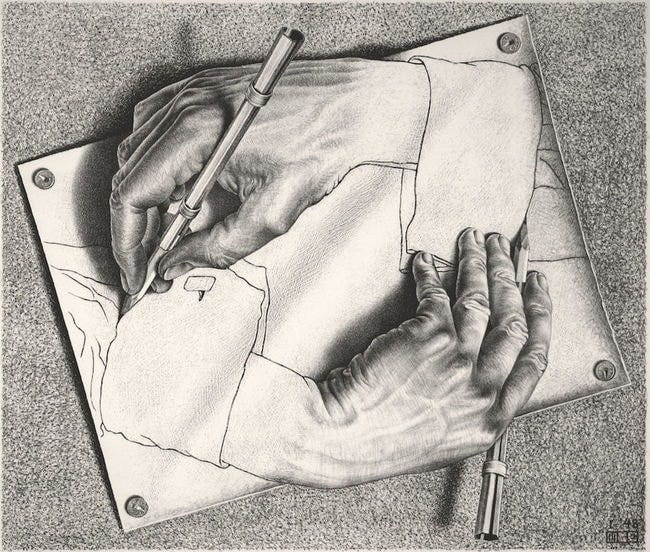
‘Drawing Hands’, by Escher
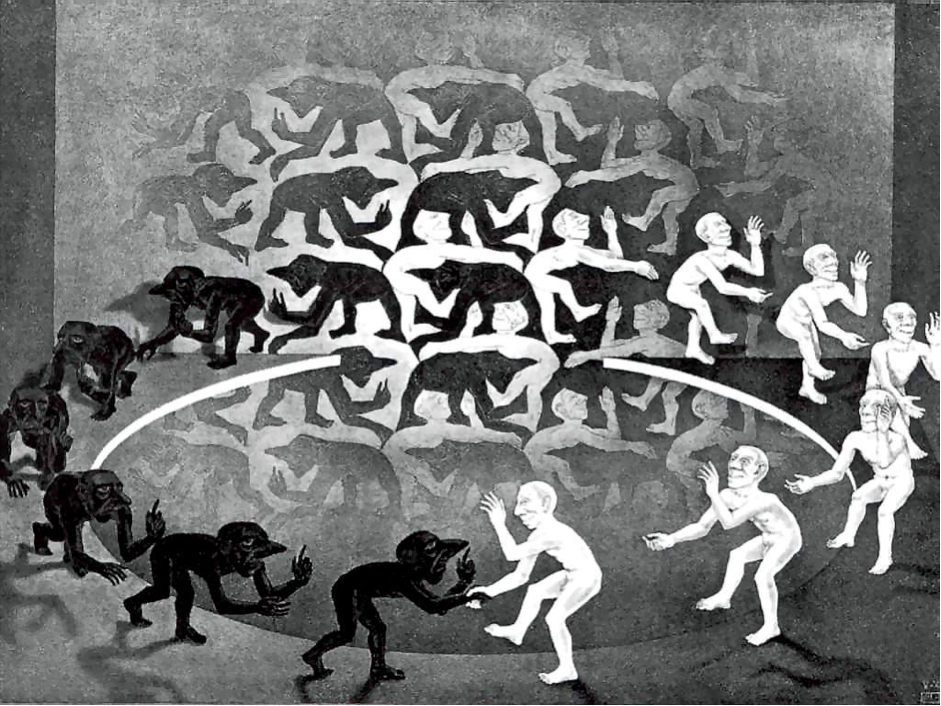
Optimists and pessimists interconnect and emerge from the same surface, to shake hands.
In the print below, Escher depicts the ‘theme’ of a fourth spatial dimension. There are two worlds here, in their own 3D space. The light-colored world is inhabited by human beings, who have brought signs of civilization such as houses and bridges. The dark colored world is in a ‘natural state’, shown by various forms of vegetation and prehistoric animals. They are two parts of a whole but have no knowledge of the other’s existence. Take a moment to appreciate the beautiful analogy.

‘Double Planetoid’ by Escher (1949)
Life in a three-dimensional space cannot detect a fourth dimension. This concept becomes easier to understand if we look at our world from the perspective of two-dimensional life. The famous physicist and thinker, Carl Sagan, explains this beautifully in the video below.
Sagan refers to a 19th century book of science fiction, about a world that exists in only two dimensions.
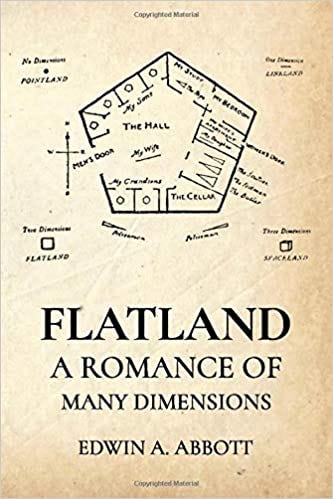
I won’t go into the details of the plot (it is a satire of societal norms), but I highly recommend that you read it. After illustrating the working of a two-dimensional universe, the author describes a journey to even smaller worlds.
He describes a universe that is a line. It is a universe of a single dimension. The line goes on and on, and its occupants have no concept of “width”. Everything is in front of or behind something else. Individual life, society, and civilization, evolve in this universe too. But their course is determined by the laws of their world.
It reminds me of the movie Snowpiercer, and the social dynamics aboard that post-apocalyptic train. This is my second recommendation today, one of the best action films I’ve seen, directed by Bong Joon Ho.
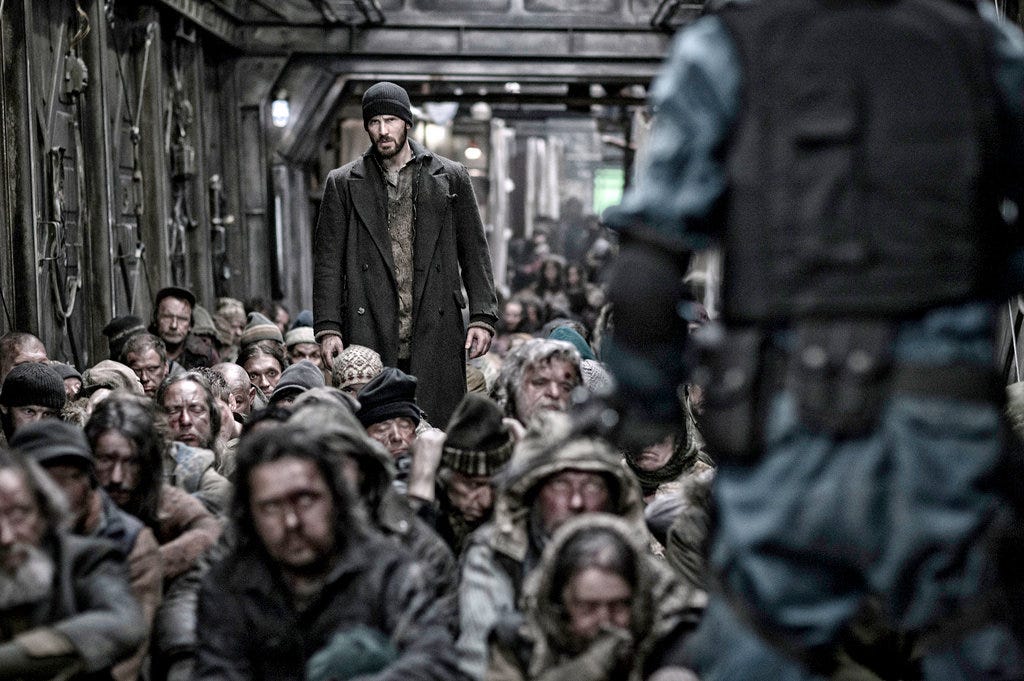
Snowpiercer (2009), by Bong Joon Ho.
But a line-universe is not the end of it. The author takes us even further to a zero-dimensional universe. An entire universe that exists as a single point. No concept of length, width or depth. In this world, a being has no concept of ‘other life’. Everything is one. Everything is only itself. It is singularity.
The Long Connect
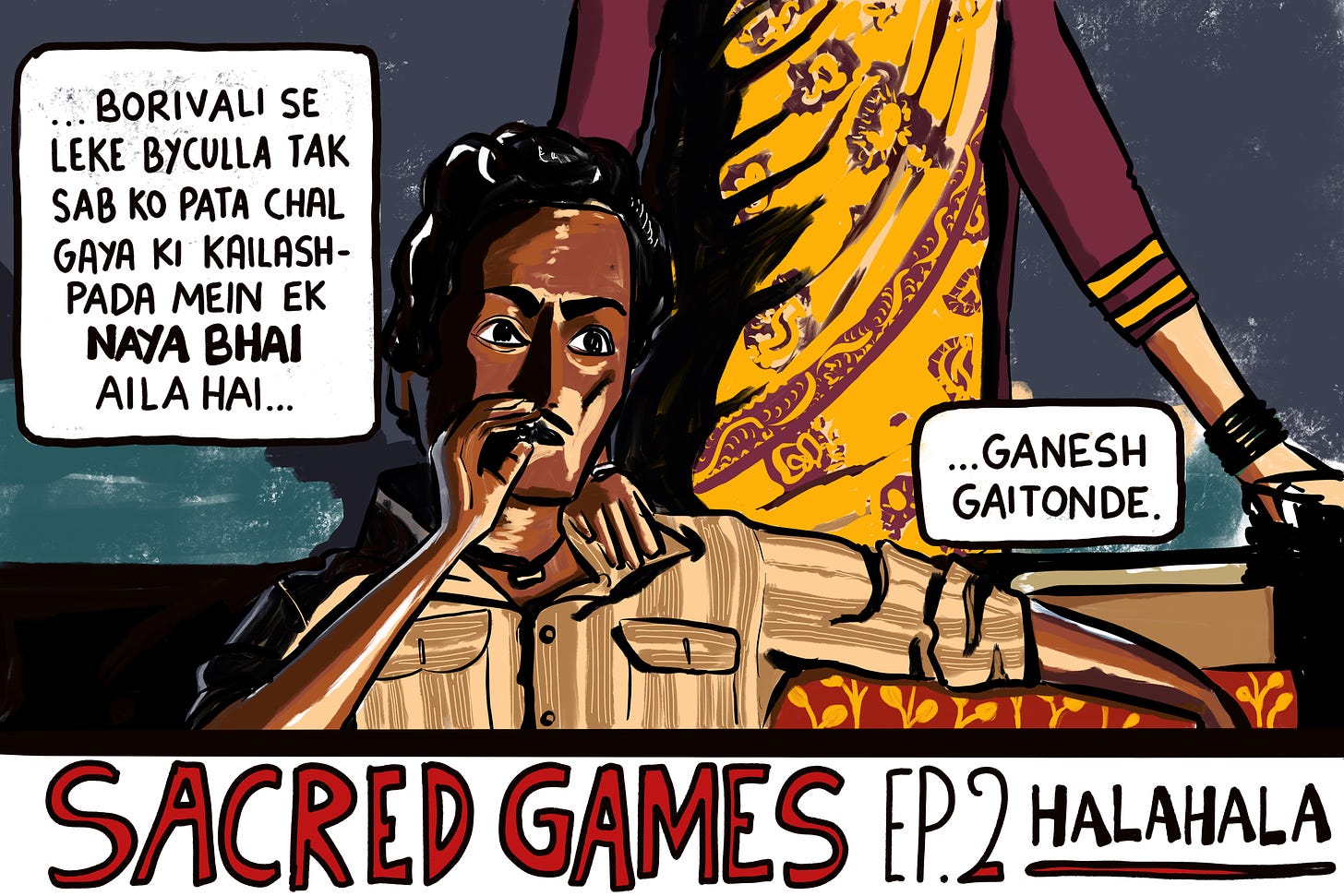
Singularity of all life is an ancient philosophical concept. Advaita Vedanta is one school of Hindu philosophy which calls the entire world an illusion (maya). The underlying truth is that we are all connected, as a singular, eternal life force. Literally, advaita means non-duality.
I’m no philosopher. But thinking about Escher and Flatland has helped me connect with a TV show that I really love. In Sacred Games (on Netflix), a narcissistic criminal is seduced by a godman to do his bidding. Ganesh believes that he might be immortal. Sometimes, he says, I think that I am God.
**Spoilers ahead**
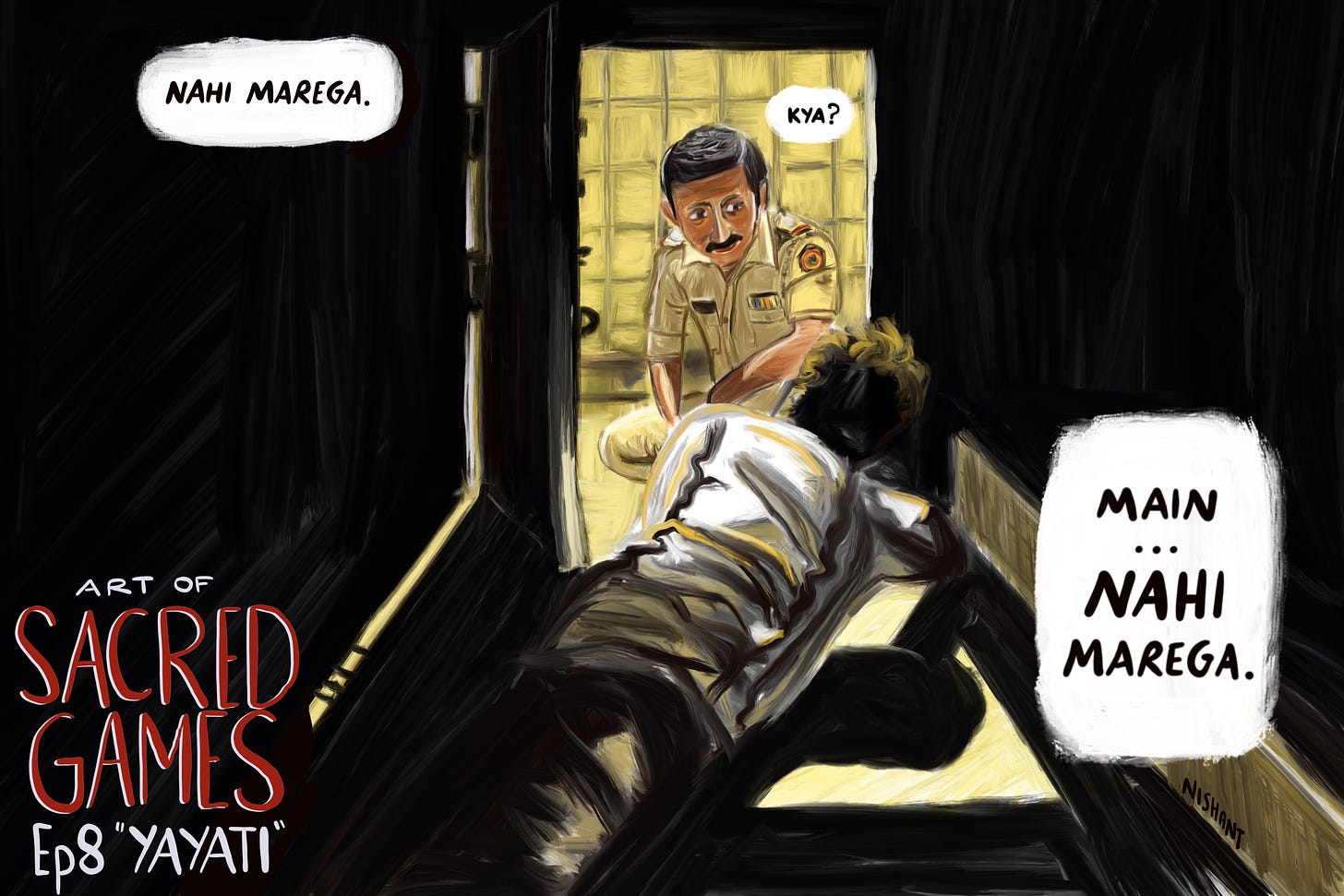
I made fan-art of each of the 8 episodes in Season 1
Ganesh meets a godman, who teaches him the concepts of Advaita Vedanta. The crux of the godman’s education lies in a mahavakya (or “great saying”) - “अहम् ब्रह्मास्मि”.
Aham brahmasmi.
Loosely translated, it reads - “I am the universe and everything in it”.
In the second season, Ganesh suffers a crisis of faith. He visits his guru and demands answers. They run through a catechism, at the end of which they declare - “Main Brahma hoon!”
“I am Brahma!” they chant, referring to the Hindu deity who created the universe from nothing.
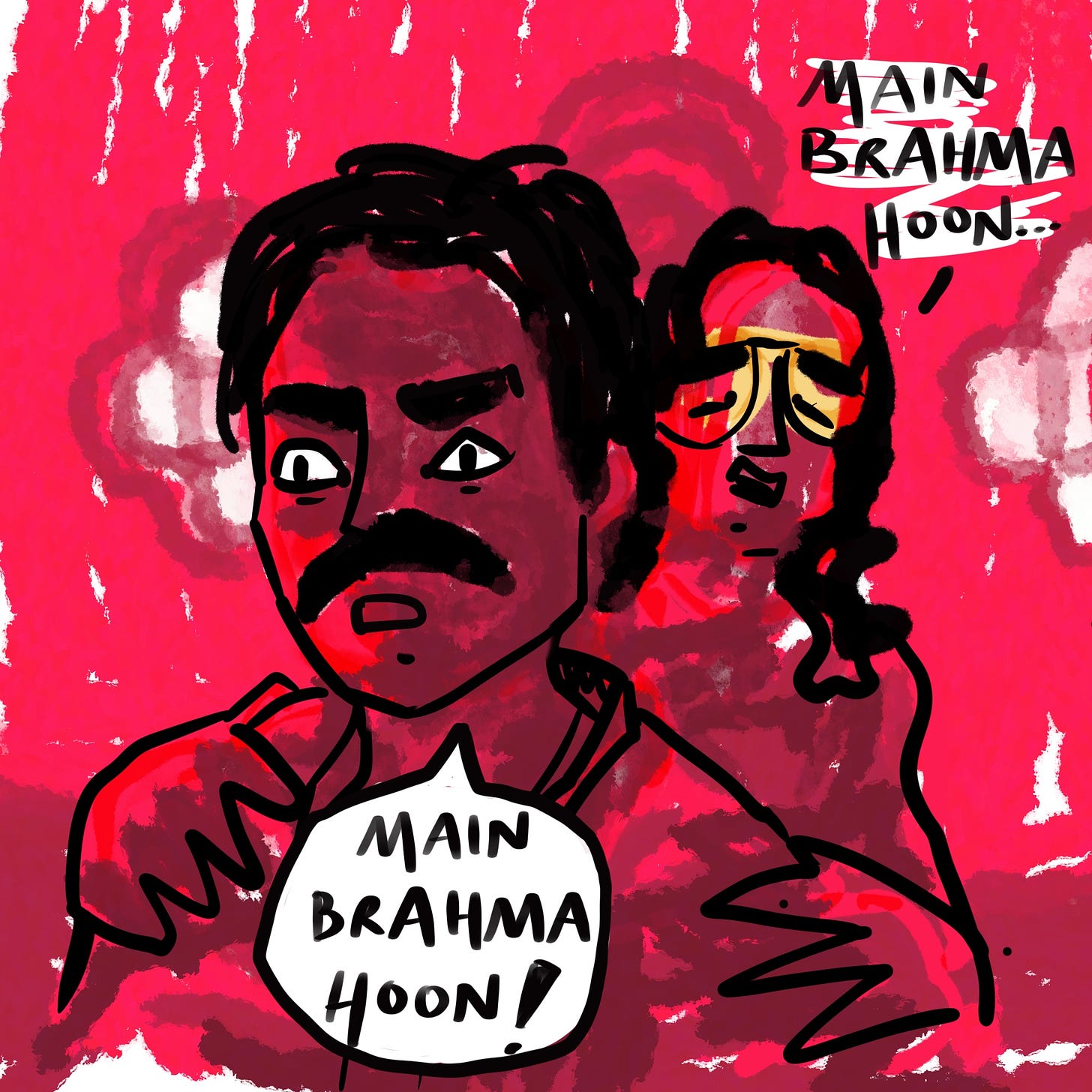
The chant grows louder and louder, and the mania takes over Ganesh. He believes again. But what does it mean to be Brahma? Can there be two of them? Can singularity recognize something other than itself?
Gripped in the fever of his brainwashing, Ganesh turns around and smothers his guru to death. “Sirf main hi Brahma hoon!” he repeats. Only I am Brahma! Only I can exist!
Was that an interesting journey? Did it feel a little like this piece by Escher?
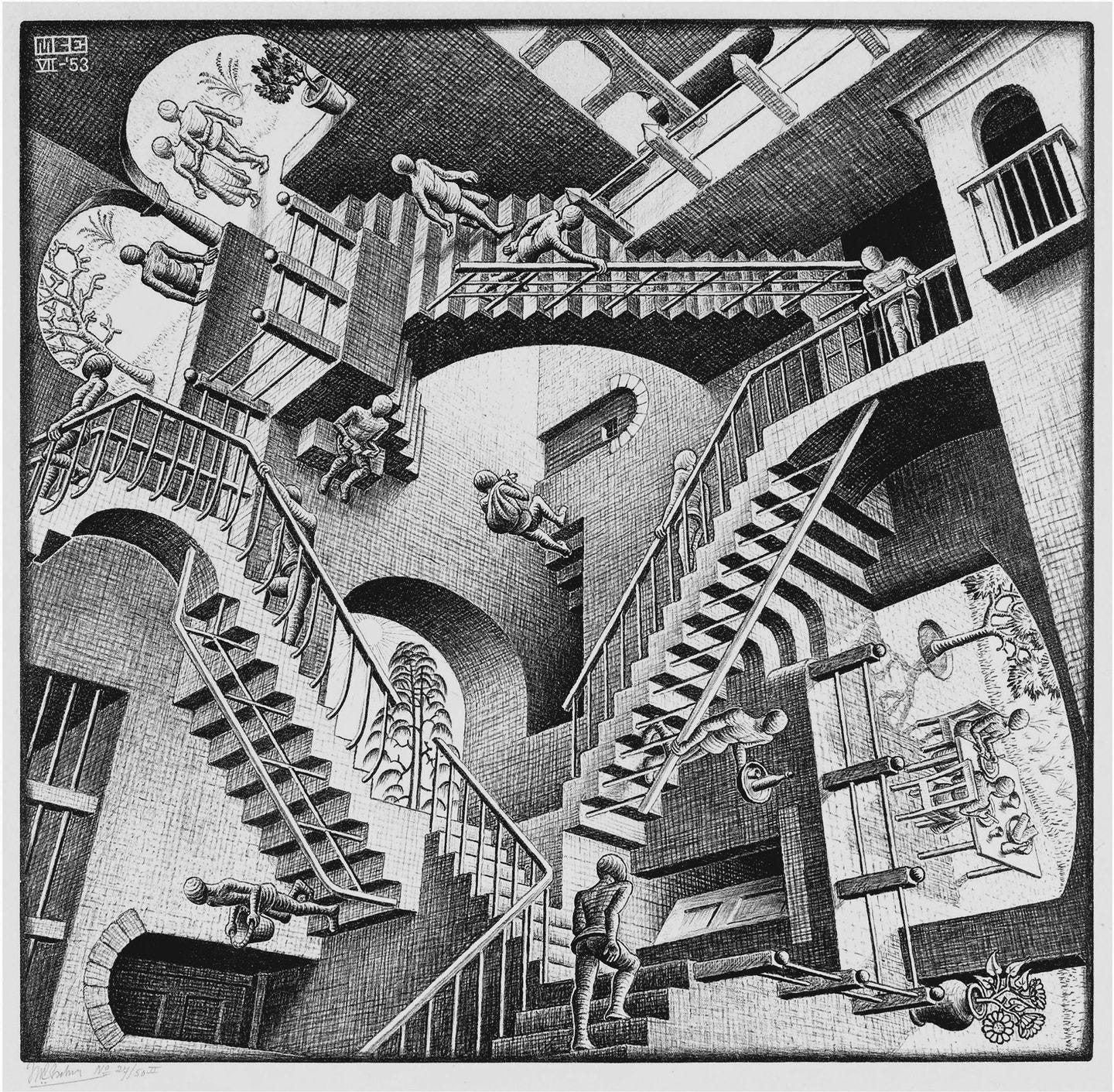
Relativity
Next week
I was asked recently about the art that influences SneakyArt. But every time I try to answer that question, my mind throws up new answers. Next week, I will answer it by sharing the works of cartoonists I read as a child.
In addition, I will talk about my experience making SneakyArt at two editions of the Jaipur Literary Festival. I am currently working on a commission featuring the Chicago skyline, so there will be progress pics from that too.
Thank you for your attention, and see you next week.
Some fun links:
[1] A compilation of SneakyArt I have drawn on the CTA
[2] ‘Philosophize This’ - My favorite podcast on philosophy [Spotify]
[3] Neil deGrasse Tyson explaining links between science and faith
[4] ‘School of Life’ - A fantastic YouTube channel about philosophy, among other things
[5] ‘History of India’ , a great podcast
[6] Physicist and futurist Michio Kaku explains how many dimensions there are in our universe
If you enjoyed reading this post, share it with someone who might feel the same!



